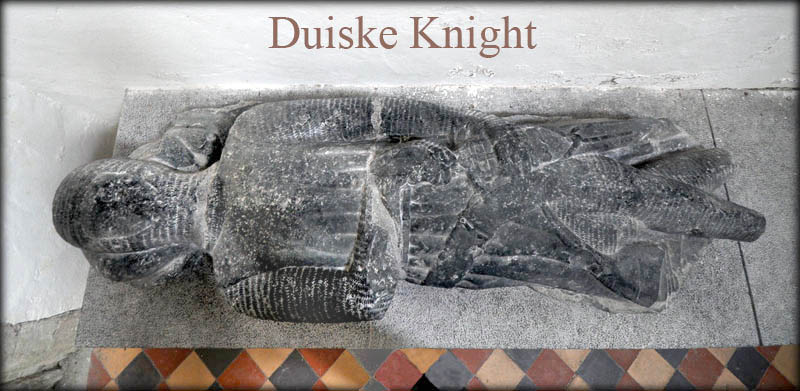Duiske Abbey
13th century Cistercian Abbey
Duiske Abbey was founded by William Marshal, Earl of Pembroke, in c.1204 as a daughter house of Stanley Abbey in Wiltshire, England. Monks from Wiltshire colonised the abbey in c.1207. The abbey was suppressed under Henry VIII. In 1541 the last abbot, Charles Kavanagh, of the Kavanagh/McMurrough family, surrendered the abbey to King Henry, who in turn bestowed the abbey and lands to James Butler, 9th Earl of Ormonde.
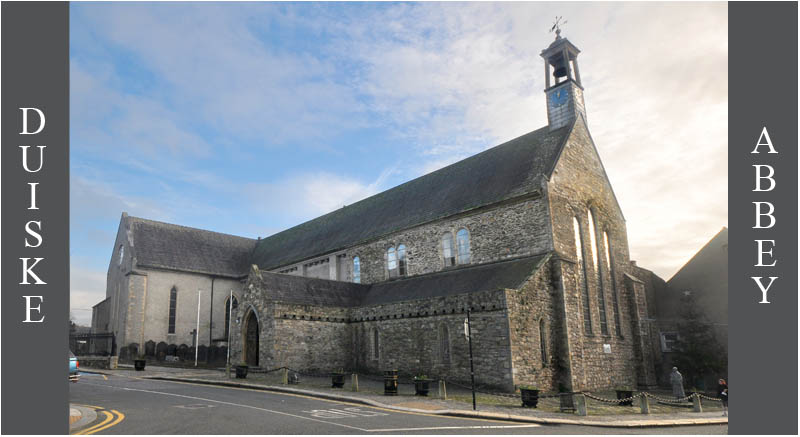
After the earl was poisoned, in 1546, the abbey was passed to his fifth son James. It remained in the possession of the Butler family up until 1691, when the 3rd Viscount Galmoy was outlawed. The original structure was cruciform in plan with a crossing tower. The double -height nave originally comprised of six bays, on either side, and single storey lean-to side aisles. Only three bays on each side remain.
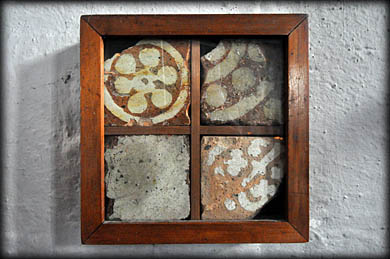
Medieval floor tiles
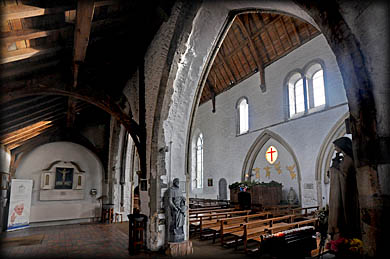
Looking into the nave from the side aisle

When you enter the church through the single storey porch, protruding from the west end of the north wall, you find yourself in the north aisle. There are clerestory windows high above the arcade, on each side of the nave. After the dissolution of the monasteries the abbey gradually fell into ruin and in 1774 the crossing tower had fallen into the nave. The Church of Ireland carried out some repairs before the church was returned to the Catholic Church in 1812 and reconstructed to serve as a Parish Church.
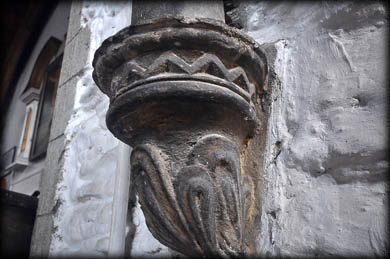

In 1886 the church was restored and the floor level was raised by two metres. Further restorations was carried out in the 1970s. Tucked away in a corner against the exterior north wall is an octagonal stone font. It is standing in what maybe the original octagonal base. A later alabaster font is situated in the Baptistery, see below.
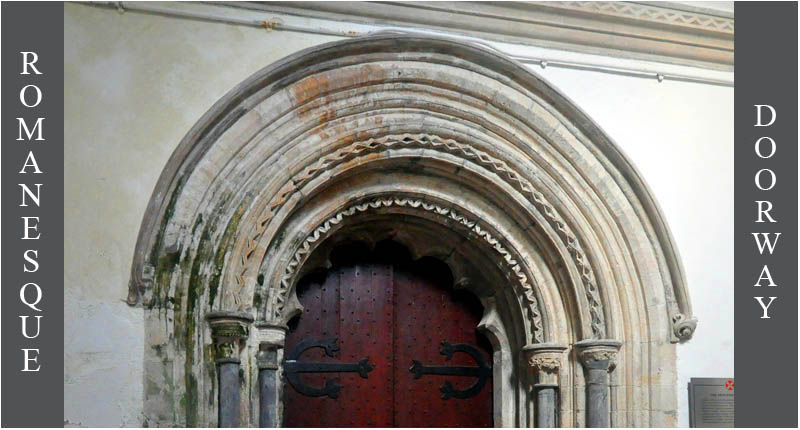
A door in the west wall of the south transept, leads to a baptistery. A few wooden steps take you down to the original floor level. There is an alabaster font and an effigy of a knight, see below. Also present is a beautifully decorated 13th century Processional doorway, pictured above. It is believed the floor tiles in the baptistery are original. In the grounds, to the rear of the church are two 8th century high crosses.

Romanesque carving
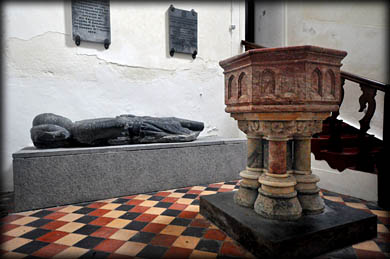
Alabaster font
Also located in the baptistery is the 13th/14th century effigy of an unknown knight. His feet are broken and the faced has been damaged. He is holding the scabbard with his left hand while grabbing the hilt with his right hand, and appears ready to spring into action. The figures legs are crossed, which was once believed by antiquarians to indicate he had taken part in a crusade, but modern scholars have discounted this theory.
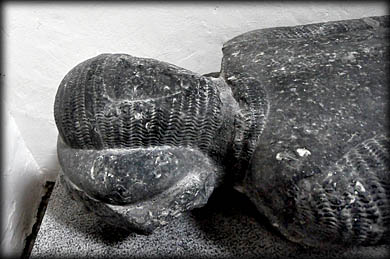
Situated: Duiske Abbey is situated on a corner site in the middle of the Graiguenamanagh, the "Village of the Monks".
Discovery Map 68: S 7090 4381. Last visit Jan 2019.
Longitude: 6° 57' 17" W
Latitude: 52° 32' 28" N
Photos: Jim Dempsey.
